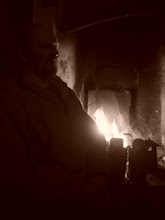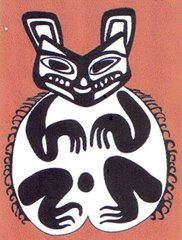Each week I'll be publishing a new item in the bushcraft basics list - this week we start but looking at our most important of all the cutting tools.
Nessmuk favored a “trinity” system of cutting tools, his little double bit hatchet, a light fixed blade and a substantial Moose pattern folder. Nessmuk’s views towards knives are arch-typical of the classic outdoorsmen; he preferred thin knives, keen edges and a useable length..
A pair of utility knives are most favourable – generally this means a larger camp knife and a smaller knife designed for cutting tasks such a game or food prep and whittling.
This trinity is what we favor also – our trinity being,
Sheath knife such as BFK
Pocket knife like the Opinel
Axe or hatchet such as the SFA.
Or
A Scandinavian option,
Scandi style neck knife
Leuku
Felling/full forest axe
This lecture deals with the tools a woodsman uses in his everyday activities.
Five kinds of Tool are generally employed in Bushcraft,
Bow saw
Folding saw
Axe
Knife
Crook knife
Another tool used in tropical environments is the Golok or machete.
Before picking up any tool in the outdoors ALWAYS pick up your first aid kit!! – Carry a small cuts kits with your knife a FFD IS IDEAL.
Be strict about this rule!
Never leave a tool unsheathed when not in use it can cause injury to ourselves – others or important equipment.
The knife
Our most valuable tool in Wilderness living is the knife.
Your knife is your life – which means choosing the right knife is extremely important to the woodsman who relies on his knife to perform all the tasks he asks of it.
There are many types of design of knife on the market and as such looking for a good one can be quite baffling. Generally the following features are desirable in a good field knife.
- The tang should run through out the handle (full tang) this should be one piece of steel and not thin towards the hilt.
- Tang should be reasonably wide ideally the same width as the blade as this lends itself to tasks such as splitting and hammering.
- Handle shaped is important – an oval shape is best as this will cause less fatigue in the hand from prolonged use.
- No guard – this is for fighting knives in bushcraft a guard will get in the way.
- The tip should be in line with the centre of the knife all the way through the handle. This gives the tip strength but also keeps it clear of bones ect when skinning or butchering game.
- The blade edge has a gentle curve from tip to handle as this is easiest to sharpen.
- Flat bevel with a edge of approx 25 degrees
- Capable of fine work but robust enough to act as a wedge for driving into wood.
Dimensions – blade length should be equal to your hand width for mechanical advantage ect. Spine not to thick to allow food prep ect.
Carbon VS Stainless steel.
For bushcraft work we generally opt for carbon steel. It is our preference because,
- It has soul – the steel reacts to the weather and materials cut – it will rust and as such needs to be looked after.
- Takes a keener edge – but needs more maintenance (generally speaking)
- Sparks with flint
That said stainless steel has its place especially is constantly working around water – stainless’ advantages are,
- Doesn’t rust – more hygienic
- Generally will not take or hold a razor edge but will hold a sharp edge much longer (high carbon stainless steels are the exception here)
- Hard or soft temper
Carrying your knife.
Always carry your knife on your person. I usually suggest students wear their knives around their necks in the Native American fashion because there is less chance of losing it and as such they are always aware of its weight and would notice its absence.
Note – a blade longer than 7.4cm is deemed as an offensive weapon -.so a knife worn around the neck and under your shirt will not upset anyone you can chance upon in the woods. It’s safe and discrete (Learn and observe the laws in your country)
A knife worn on a belt interferes with the waist straps of a rucksack unless it has a strap similar the the BFK or the classic scandi, htese are designed to hang below the belt and give free unhindered carriage and movement.
If a knife is left lying around it is a danger to everyone – never do it – always return to sheath after use! This is the classic sign of a poorly trained amateur and as such you will be deemed a very poor woodsman
4 BASIC BLADE CONFIGURATIONS
Convex – seen on axes and machetes this is good for chopping at its robust and lasts a long time. The convex edge is easiest to produce but is not good to wood work and carving.
Concave – Hollow ground edges are usually mass produced and are generally fairly cheap to buy. They are hard to maintain and have an inherent weakness.
Secondary Bevel – this is most common and is actually so very good for carving and is also prone to rapid edge lose and is harder to sharpen.
Flat Bevel – blades with a flat, single bevel are strong, good for carving and splitting wood as well as being easy to sharpen.
Other knives
- Folding knives – are useful easily in food prep but they lack the strength of a sheath knife. The locking mechanism can fail making them dangerous to use.
Next we will look at how to maintain and sharpen your knife.
Saturday 20 January 2007
Subscribe to:
Posts (Atom)




















